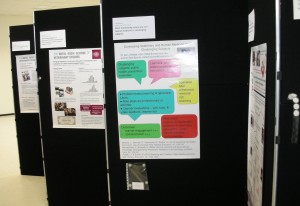 Author note: there was an encouraging level of interest in this topic shown after the presentation by several people commenting on the novel package that engaged the learners so actively.
Author note: there was an encouraging level of interest in this topic shown after the presentation by several people commenting on the novel package that engaged the learners so actively.
Robbé, I. J. Memorial University, Newfoundland and Burnie, R. South London NHS Trust
Abstract
Background:
Teaching veterinary undergraduates in subjects like public health, prevention, zoonoses, can be challenging due to learners’ negative preconceptions and their lack of engagement despite being specifically mentioned in the “Day One Competences” (RCVS, 2006). In human medicine similar challenges exist in these subjects and we report on a novel approach to teaching them which could be applied to veterinary medicine.
Methods:
A change in the teaching of a public health module in a UK medical school was necessitated by the withdrawal of specialist, primary care tutors. We changed the module from eight lectures to six case studies on public health screening and prevention subjects using a methodology of problem-based learning, role-plays with videorecording, learner evaluations and feedback (Robbé and Burnie, 2012).
Results:
The methodology caused the learners to think about problem solving in their roles, for example, activists for prostate cancer screening or opponents of vaccinations confronting doctors or nurses holding opposing views. Engaging discussions were provoked by the self-determined inquiries leading to the role-plays and by reviewing the videos, immediate evaluations and feedback.
Discussion:
In veterinary and human medicine, subjects like public health, health determinants, anthrozoology, and the One Health Initiative (http://www.onehealthinitiative.com/), are connected by their increasing importance and their relative unpopularity with undergraduates. Our methodology involves constructivist learning, communication competences, and active engagement. It increases the learners’ cultural and social capital (Mossop, 2013; Mykhalovskiy, 2005) through facilitating the development of their learning constructs. We suggest this methodology could be applied to challenging subjects in veterinary education.
Mossop, L., Dennick, R., Hammond, R., Robbé, I.J. (2013) Analysing the Hidden Curriculum: Use of a Cultural Web. Medical Education, 47, 134-143.
Mykhalovskiy, E. & Farrell, K. (2005) Informal Learning and Socio-clinical Knowledge amongst Family Physicians. Research in the Sociology of Health Care, 23, 159-181.
RCVS. Royal College of Veterinary Surgeons. (2006). Essential Competences Required of the Veterinary Surgeon. London: Royal College of Veterinary Surgeons.
Robbé, I.J. & Burnie, R. (2012) Breaking with Tradition: Case Studies and Role-play. Medical Education, 46, 1106-1107.
